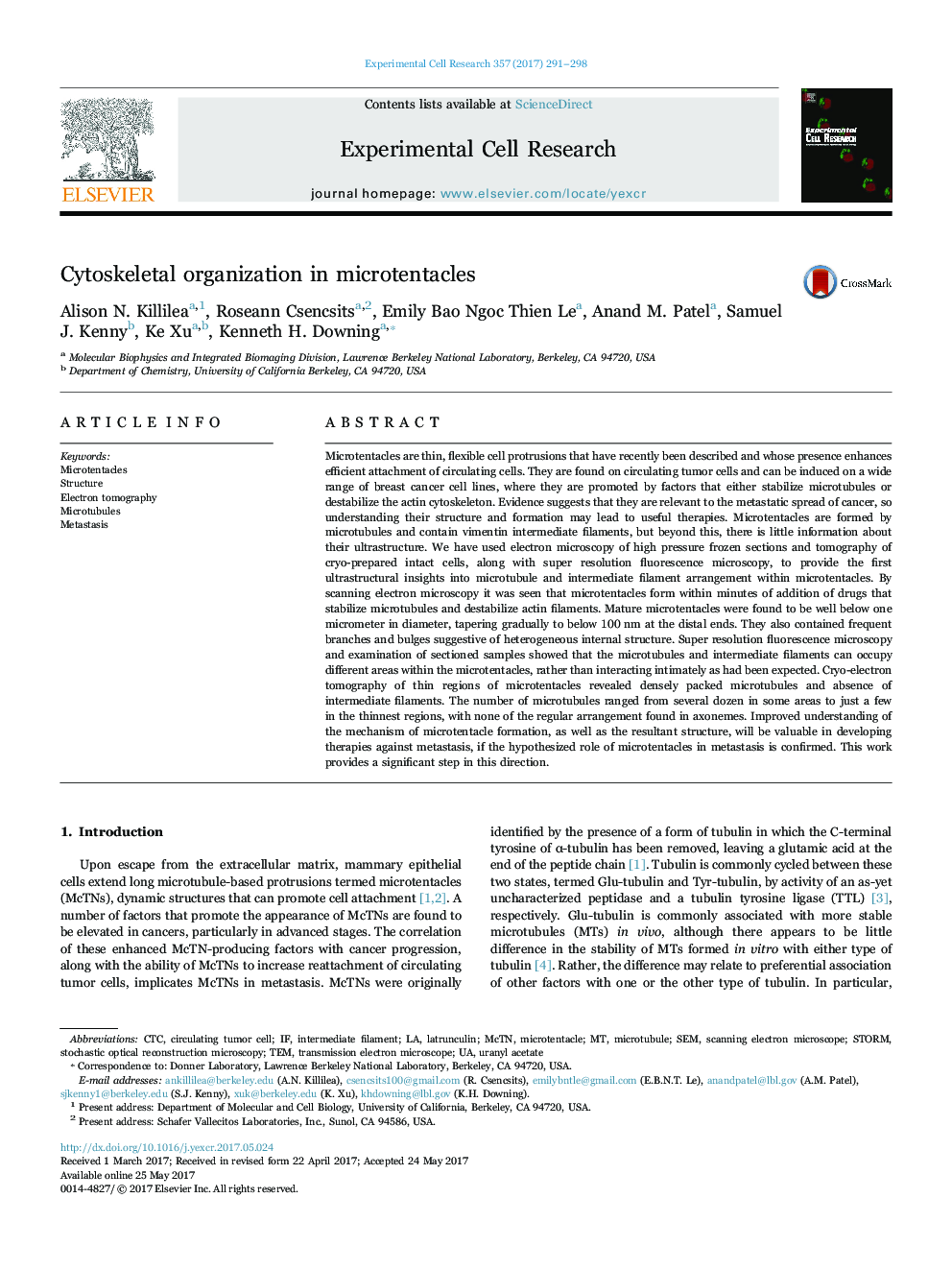| کد مقاله | کد نشریه | سال انتشار | مقاله انگلیسی | نسخه تمام متن |
|---|---|---|---|---|
| 5526913 | 1401555 | 2017 | 8 صفحه PDF | دانلود رایگان |

- Microtentacles can form within minutes of the addition of inducing drugs. Microtentacle diameters are in the range of a tenth of a micrometer.
- Microtubules are clearly resolved in microtentacles by cryo-electron tomography.
- There is little microtubule-intermediate filament interaction in drug-induced microtentacles.
Microtentacles are thin, flexible cell protrusions that have recently been described and whose presence enhances efficient attachment of circulating cells. They are found on circulating tumor cells and can be induced on a wide range of breast cancer cell lines, where they are promoted by factors that either stabilize microtubules or destabilize the actin cytoskeleton. Evidence suggests that they are relevant to the metastatic spread of cancer, so understanding their structure and formation may lead to useful therapies. Microtentacles are formed by microtubules and contain vimentin intermediate filaments, but beyond this, there is little information about their ultrastructure. We have used electron microscopy of high pressure frozen sections and tomography of cryo-prepared intact cells, along with super resolution fluorescence microscopy, to provide the first ultrastructural insights into microtubule and intermediate filament arrangement within microtentacles. By scanning electron microscopy it was seen that microtentacles form within minutes of addition of drugs that stabilize microtubules and destabilize actin filaments. Mature microtentacles were found to be well below one micrometer in diameter, tapering gradually to below 100Â nm at the distal ends. They also contained frequent branches and bulges suggestive of heterogeneous internal structure. Super resolution fluorescence microscopy and examination of sectioned samples showed that the microtubules and intermediate filaments can occupy different areas within the microtentacles, rather than interacting intimately as had been expected. Cryo-electron tomography of thin regions of microtentacles revealed densely packed microtubules and absence of intermediate filaments. The number of microtubules ranged from several dozen in some areas to just a few in the thinnest regions, with none of the regular arrangement found in axonemes. Improved understanding of the mechanism of microtentacle formation, as well as the resultant structure, will be valuable in developing therapies against metastasis, if the hypothesized role of microtentacles in metastasis is confirmed. This work provides a significant step in this direction.
Journal: Experimental Cell Research - Volume 357, Issue 2, 15 August 2017, Pages 291-298